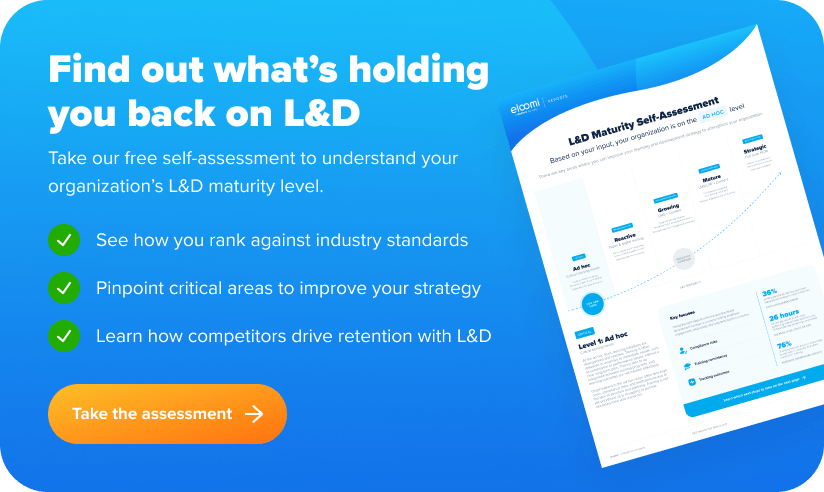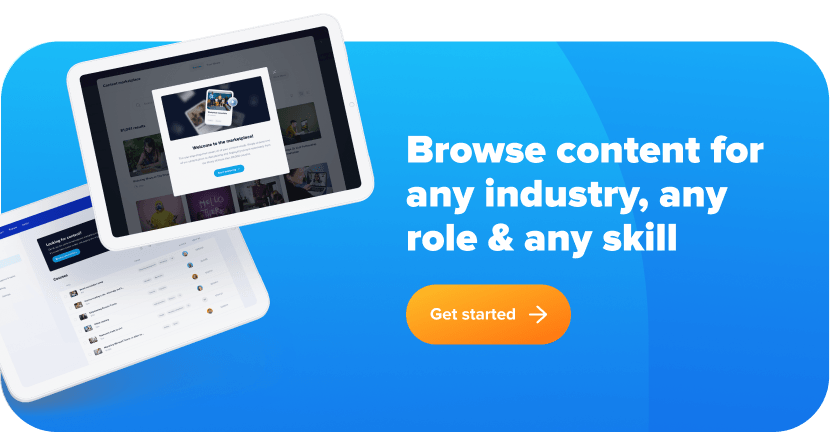We’ve all heard about the importance of continuous learning in the workplace. But what is it, exactly, and why is continuous learning important? According to Forbes, 76% of employees are more likely to stay with a company that offers continuous training. While a further 55% said they need additional training to perform better in their roles.
In this light, it’s clear that continuous learning presents a great opportunity for organizations. It drives employee retention and engagement, while also ensuring that every individual can become a strong contributor to the organization.
So, to help you move towards your learning and development goals, we’ve created this guide to create a culture of continuous learning in your organization. To start, we’ll dig further into the benefits of learning, to help you make a formal business case for dedicated training.
Why is continuous learning important?
Investing in continuous learning pays dividends. According to a study by LinkedIn, companies with strong learning cultures are 92% more likely to innovate, 52% more productive, and 46% more likely to be first to market with new products and services. Take, for example, tech giants like Google and Apple, known for their commitment to employee development. These companies consistently outperform competitors due to their emphasis on continuous learning.
At eloomi, we’ve seen how having a dedicated learning platform can transform organizations, from enhanced communication to higher staff retention. By prioritizing power skills such as creative thinking and adaptability, organizations can further build on the strengths and capabilities of their talent pool, becoming a more agile organization in the face of change.

Benefits of continuous learning
Let’s unpack the specifics of how creating a culture of continuous learning can reshape your organization.
- Increased Innovation: Companies that cultivate strong learning cultures are better positioned to drive innovation. Embrace continuous learning to stay ahead of the curve and drive innovation within your organization.
- Enhanced Productivity: Organizations with strong learning cultures are 52% more productive. By investing in continuous learning, you can boost productivity and achieve better results.
- Quicker Adaptation: In today’s rapidly changing world, adaptability is key. Continuous learning enables your team to adapt quickly to new technologies, market trends, and customer preferences.
- Competitive Edge: Companies that prioritize continuous learning are more likely to lead in introducing novel products and services. Stay competitive by continuously developing the skills and knowledge of your workforce.
- Improved Employee Retention: As we’ve seen, 76% of employees say they are more likely to stay with a company that offers continuous training, clearly demonstrating their inclination to stay longer at companies that invest in their professional development. Invest in continuous learning to retain top talent and build a loyal workforce.

How to foster a continuous learning mindset in your organization
Fostering a continuous learning mindset in your organization involves creating an environment that encourages curiosity, supports experimentation, and values ongoing development.
Start by offering diverse and accessible learning resources, such as online courses, workshops, and mentorship programs. Encourage employees to set personal development goals and recognize their achievements in acquiring new skills. You can also explore different approaches to learning, making training more accessible through digital platforms, or encouraging microlearning: where courses are taken in short 5-minute bursts to encourage knowledge retention and learning in the flow of work.
Leadership should model continuous learning by actively participating in training and sharing their learning experiences. By embedding learning into the company culture and daily practices, you can inspire employees to continually seek knowledge and improvement, driving long-term success for the organization.
How to support continuous learning with eloomi
Creating a culture of continuous learning is not just about implementing training programs—it’s about fostering a mindset that values growth and development at every level of the organization. By integrating learning into the core values and daily practices of your organization, you can drive innovation, enhance productivity, and retain top talent.
If you’d like to see how you can easily access curated learning content, explore our comprehensive library of curated training, from essential compliance topics to specialized industry skills.






